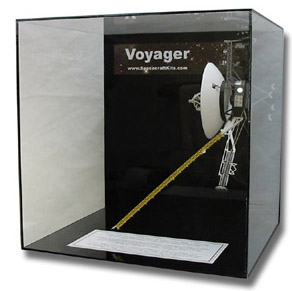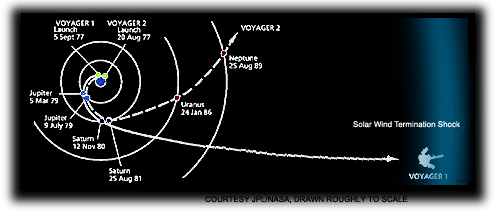
![]()

A fully assembled spacecraft scale model comes beautifully mounted in its own acrylic display case, perfect for your office, study, classroom, your local library, or college planetarium. Our first offering in the series is NASA's workhorse, Voyager, which is currently making exciting new discoveries in the farthest regions of our solar system.
The acrylic case measures 12 inches by 12 inches by 10 inches and encloses a precision-detailed, assembled laser-cut paper scale model that captures the important visual and dimensional properties of the Voyager spacecraft. For three structures, the magnetometer boom and the two planetary radio astronomy antennas, only the sections near the spacecraft bus are shown. (If these were shown to scale at their full length, they would more than double the size of the display case).
Imagine yourself using this handsome model display to illustrate all of Voyager's scientific instruments, its major components, and its daily operations in deep space. Illustrated poster-format fact sheets and references are included.
Limited Edition Offering. First come, first served. Each display is numbered and initialed by the modelmaker. Allow up to 4 weeks for shipping.
|
Click Here for Complete
|
$ 95.00 each plus shipping |
